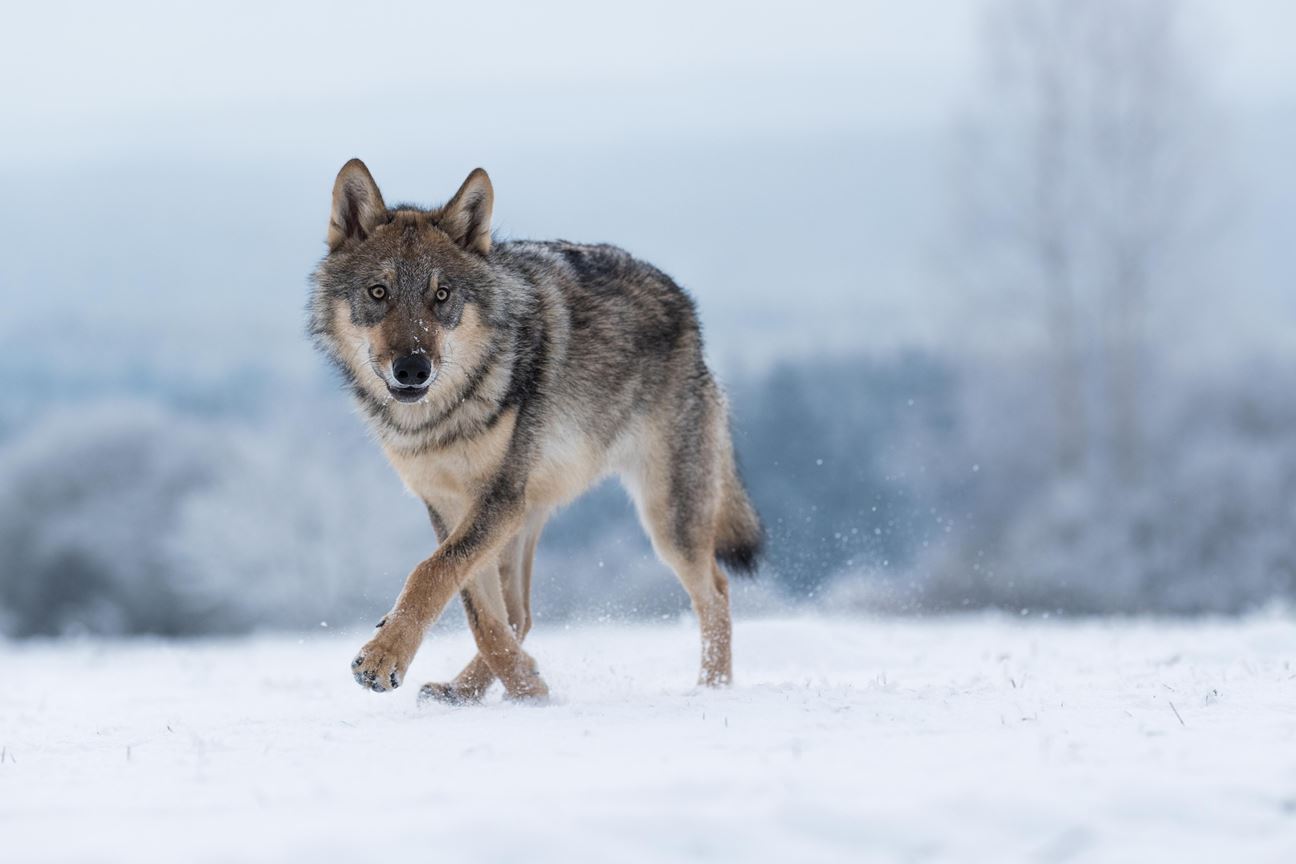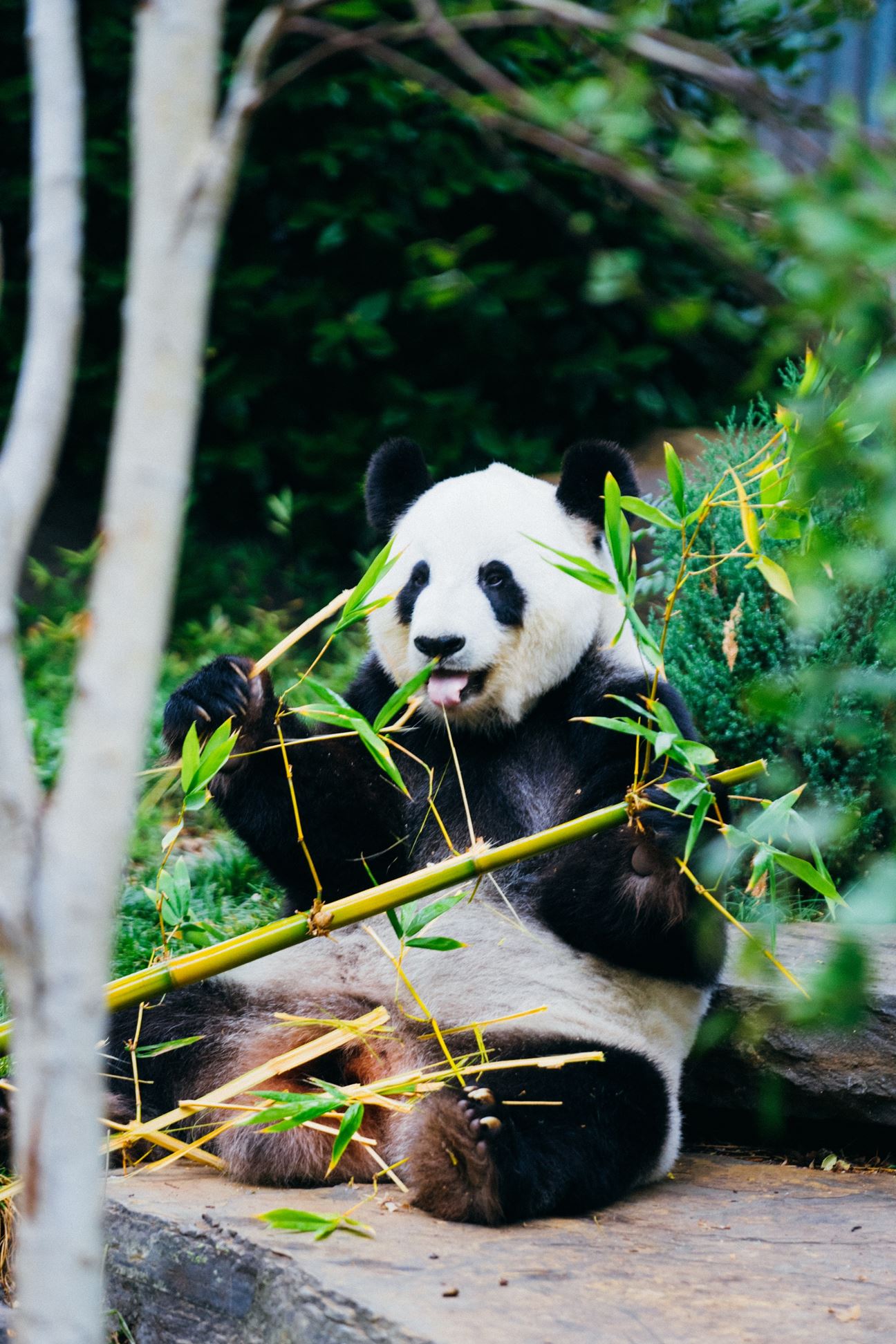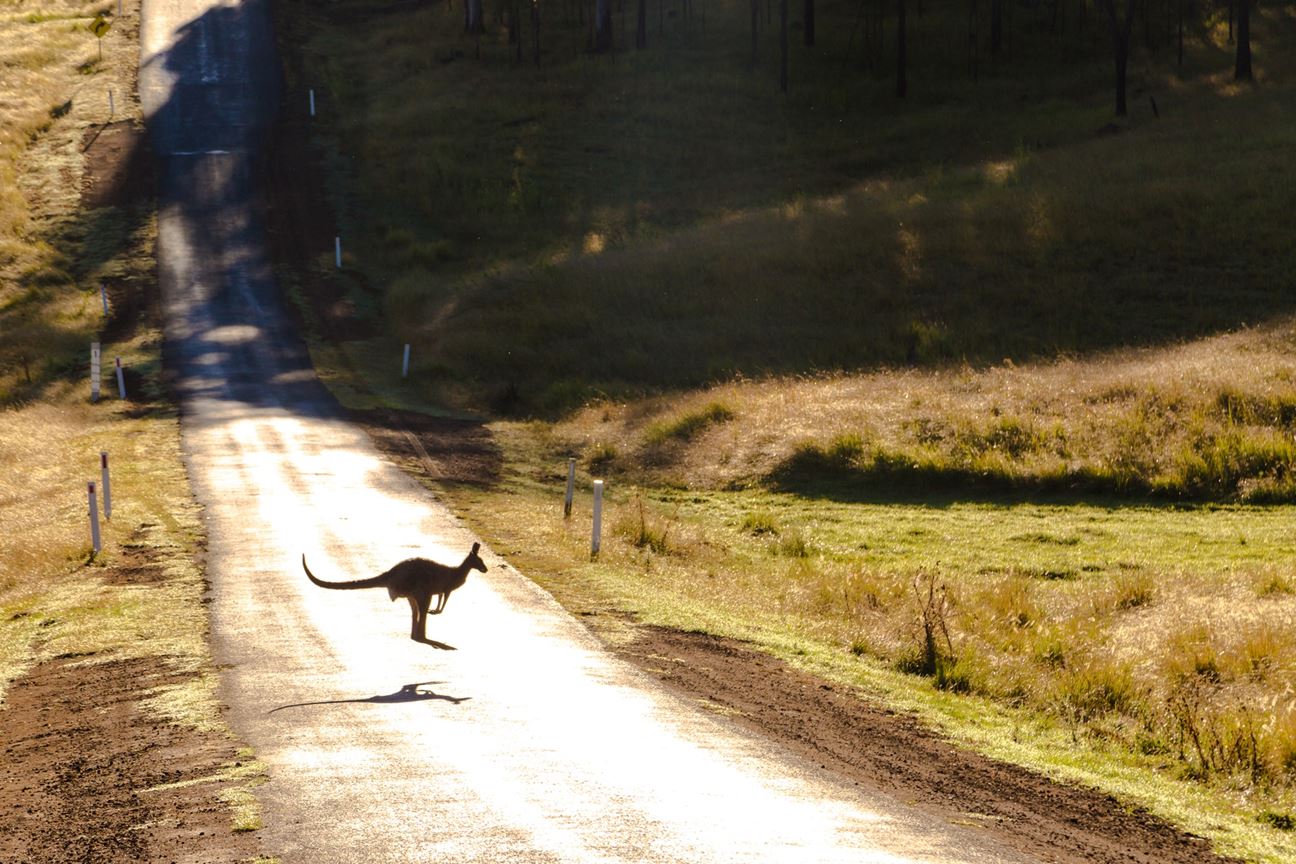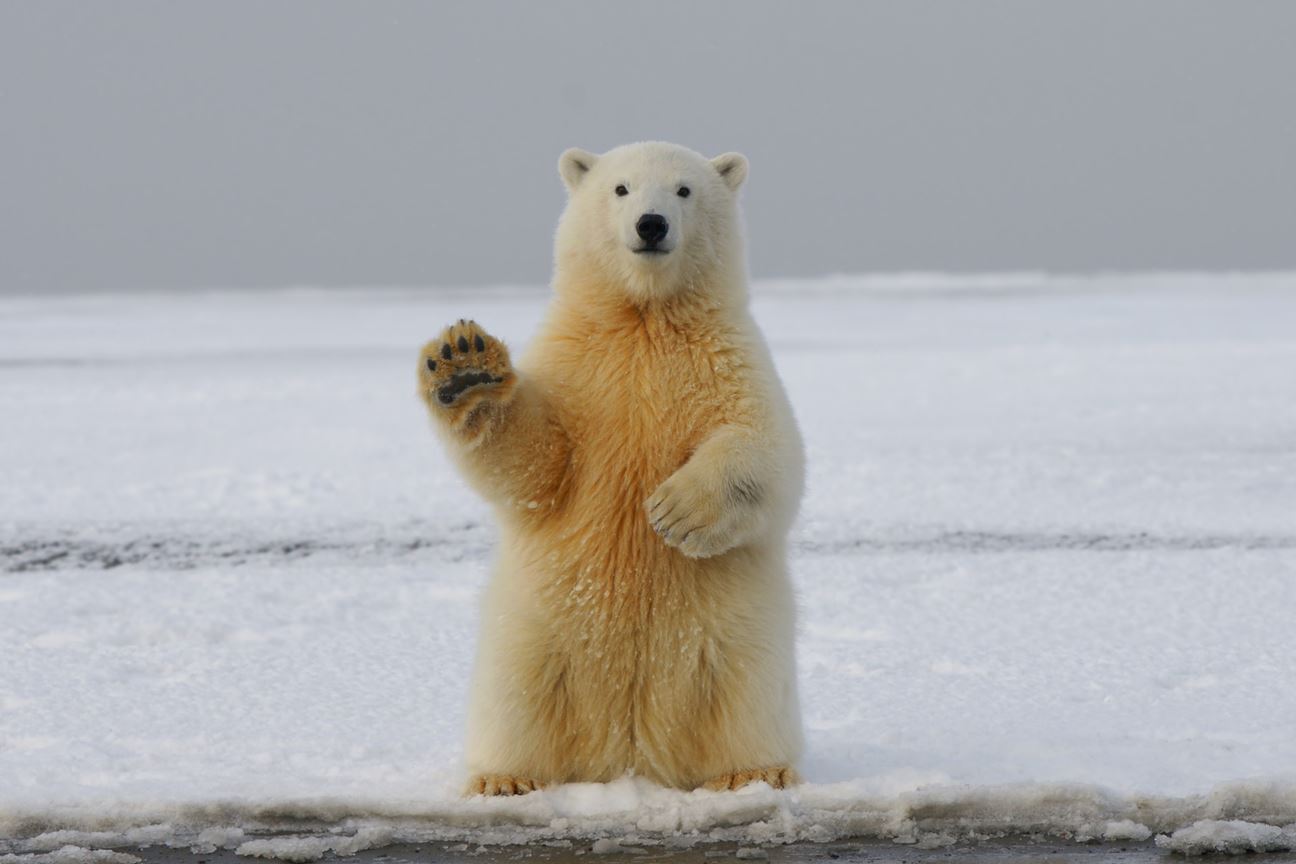Let us take a journey through this beautiful planet while stopping at each continent and appreciating its one unique animal!
We could all use a vacation. But thanks to the global coronavirus pandemic, that won't be happening soon for most of us. Let that not deter you. Today, let's take a virtual trip around the world with the most beautiful, most famous, and most interesting representatives of the animal kingdom from each continent. Do not worry, this trip has no travel restrictions!
- American Black Bear (North America)
 An American black bear spotted in British Columbia, Canada
An American black bear spotted in British Columbia, Canada
Black bears live exclusively in North America. The American Black Bear may be the smallest of the bear species in North America, but it is still pretty large! Male adults can weigh anywhere between 100 and 250 kilograms, while females are usually much lighter! Irrespective of their sizes, black bears are surprisingly quick and agile. These bears live in forests and love to feed on fruits and nuts. One can often spot them gently nibbling on shoots and plants, climbing trees and swimming in ponds and lakes. Did you know their sensational nose can smell seven times better than a bloodhound? Remember the bear essentials: While they may look all cute and cuddly, if you come across them at close range, retreat slowly while maintaining eye contact but never run!
- Green Anaconda (South America)

A bird's eye view of an anaconda in the jungle
Green Anacondas predominately dwell in the Amazon and Orinoco river basins - where the environment is moist, muddy and marshy. We all know anacondas are big, but how big really? The immensely muscular bodies of fully grown female anacondas can weigh over 100 kilograms and grow an average of 20-25 feet long! Interestingly, male anacondas grow an average of only 10 feet long. This makes them a classic example of sexual dimorphism. Like all other boas, anacondas are non-venomous. Instead, they use constriction to subdue until the prey dies of asphyxiation. Anacondas are not picky eaters. In fact, they will eat anything and everything that comes along their way. Movies may tell you that anacondas eat humans. But we need not worry. As of now, there are no confirmed reports.
 A Eurasian wolf spotted at a close range
A Eurasian wolf spotted at a close range
Also known as the European wolf, these are subspecies of the grey wolf. Eurasian wolves are wild doglike carnivores. They have an exceptionally wide range that runs from Western Europe to parts of East Asia. These wolves are slenderly built and can vary in size. But on average, they weigh between 35 to 50 kilograms. Eurasian wolves, like other wolves, move around in tight-knit family groups. For centuries, wolves have faced persecution by humans due to their somewhat fearsome reputation and the many deep-rooted superstitions as talked about in folklore, but recent times have witnessed a turnaround in the way these wolves are perceived. Conservation efforts are helping strengthen the relationship between locals and wolf packs.
 A panda doing what he loves the most - eat bamboo shoots!
A panda doing what he loves the most - eat bamboo shoots!
The Giant Pandas are native to South Central China and are found in the cool, misty forests of Central Asia. They may look like a teddy bear, but are, in reality, much bigger. An adult panda can weigh more than 50 kilograms! These lovely black and white bears are born pink and fur-less. Later, they grow into extremely furry, cuddly, and cute looking individuals. Let's see what a typical day in the life of a panda looks like - they spend 14 hours eating bamboo shoots, amounting to over 20 kilograms of bamboo each day. It is hardly surprising that they poop a lot. They spent the rest of the time sleeping!
 A kangaroo hopping its way across a country road
A kangaroo hopping its way across a country road
Kangaroos are indigenous to Australia as its most iconic animal! These distinctive marsupials (animals who carry their young ones in a pouch) are the ones alive today! The Eastern grey kangaroo can stand taller than an average human being - reaching nearly 7 feet tall. Kangaroos refer to all its 14 species and come in many shapes and sizes. To move from one place to another, kangaroos prefer to hop, sometimes using their tail as a fifth leg. This happens because kangaroo legs cannot move independently. And they are fast! A red kangaroo leaps 6 feet from the ground and hops 25 feet in one bound. The overpopulation of kangaroos is a real thing. There are more kangaroos than humans in Australia, almost double the human population.
- Grey Crowned Crane (Africa)
 Grey Crowned Crane out in the wild
Grey Crowned Crane out in the wild
The vast forested areas of Africa are home to several large and small terrestrial animals. So what makes Grey Crowned Crane so special? Let's see. These birds are considered a symbol of elegance, prosperity, harmony, and grace in many cultures. The Grey Crowned Crane is also the national bird of Uganda and is known to be one of the oldest cranes. These birds have grey bodies with white and golden feathers along with the very striking red caruncles below their beaks. But their most beautiful feature has to be their crown made up of a spray of straight golden feathers. These cranes can grow up to 1 metre tall and have a wingspan of almost 2 metres. They live in the dry savanna and somewhat wetter marshes across the continent of Africa.
 It is the end of our world trip. Here is a polar bear saying goodbye
It is the end of our world trip. Here is a polar bear saying goodbye
A resident of the Arctic Circle, the polar bear’s range encompasses both land and sea. But they spend most of their time on the sea ice looking for food. Male polar bears can weigh as much as ten humans and can reach up to 800 kilograms. Females, on the other hand, only weigh half of that. This makes them the largest land carnivore in the world! Like most bears, they look adorable, but in fact, are powerful predators! Their amazing sense of smell helps them locate prey from almost a kilometre away. Did you know under all that white fur, polar bears are actually all black? Polar bears are greatly respected by the people living in the Arctic. Their resilience, patience, and determination to survive the harsh climate have played an important role in many cultures. While climate change affects most animals on this planet, including humans, polar bears face the most risks of habitat destruction.
Now, let's meet a few representatives of the South Pole, too. Antarctica's wildlife is surprisingly diverse and unique. As many as 18 different species of penguins, orcas or killer whales, and many types of seals live on this southern continent. The climatic conditions are pretty harsh here. And similar to the Arctic, the rising global temperatures and retreating of sea ice are leading to habitat destruction.
Do you have more animals to add to this list? Do let us know in the comments below!